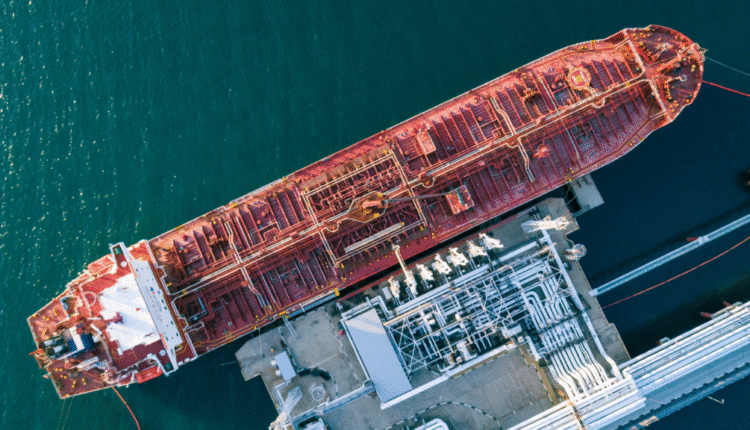According to the Public Relations Department of the Iranian Shipping and Maritime Services Association, the Baltic Exchange Weekly Market Report for Week 20, dated May 16, 2025, provides a comprehensive overview of global shipping trends in the dry bulk and tanker segments, highlighting key developments across Capesize, Panamax, Ultramax/Supramax, Handysize, and various tanker categories.
Capesize: An Optimistic Close
The Capesize market ended the week on a positive note. In the Pacific, rates initially dipped slightly but recovered midweek thanks to strong participation from miners, with the C5 index ultimately reaching $8,195. The Atlantic was more complex: early concerns over an increase in open tonnage and logistical challenges—such as loading equipment issues in San Nicolas—exerted pressure. However, strong demand from southern Brazil and West Africa, coupled with a shortage of ships in the North Atlantic, gradually improved market sentiment. The C3 route climbed to around $18.00 midweek, closing at $19,405. The front-haul market also saw notable strengthening, reflected in a significant increase in the C9 index. By week’s end, momentum in both the Atlantic and Pacific helped push the BCI 5TC index up to $16,736—an increase of $2,382 from the previous week.
Panamax: A Lackluster Week
The Panamax market had a subdued week, particularly in the Atlantic where limited demand met growing vessel supply. Transatlantic demand remained low, and the market was mainly driven by front-haul routes, although midweek rates came under pressure due to a vessel-to-cargo imbalance. Reports indicated that on Monday, an 82,000 dwt vessel fixed at $20,000 for a Europe–US East Coast–India trip, but by midweek, a similar voyage was fixed at just $14,000—indicating a notable decline. In Asia, the market was mixed. The North Pacific (NOPAC) saw weakening rates due to lack of support, though demand from Australia improved later in the week, leading to better rates for nearby positions. For example, an 82,000 dwt vessel fixed at $11,000 for a round voyage from East Australia to Japan. Period activity was limited, although there were rumors of a vessel fixing at $13,750 for 5–7 months with delivery in China.
Ultramax/Supramax: A Tepid Market
Despite holidays and various shipping events during the week, the Ultramax/Supramax market remained generally subdued. In the Atlantic, demand from the U.S. Gulf persisted but weakened by week’s end. A similar trend was seen in South America, especially for transatlantic routes. A 58,000 dwt vessel was fixed from Fazendinha to Etranto at $17,850. In Europe and the Mediterranean, lack of fresh momentum kept rates under downward pressure. In Asia, the market was described as positional; a 58,000 dwt vessel was fixed from Singapore for a voyage from Indonesia to China at $12,500, while a 63,000 dwt vessel from Surabaya to Thailand earned $17,000. The Indian Ocean saw a fair level of activity, though this slowed towards the end of the week. One 64,000 dwt vessel was fixed from Saldanha Bay to China at $20,000 plus a $200,000 ballast bonus.
Handysize: Limited Activity
The Handysize market saw limited visible activity across both basins. In Europe and the Mediterranean, fundamentals remained soft with a positional tone. A 37,000 dwt vessel was fixed from Bejaia via Jorf Lasfar to Samsun at $7,000. In the U.S. Gulf, sentiment was weak and growing vessel supply added pressure on rates. One 37,000 dwt vessel was fixed from Hampton Roads to Europe with a coal cargo at $10,500. In the South Atlantic, fundamentals were largely balanced; a 36,000 dwt vessel fixed from Recalada for redelivery in northern South America at $15,500. In Asia, while some sources noted a slight uptick in vessel supply, cargo volumes kept rates steady. A 38,000 dwt vessel was fixed from CJK via Bing Bong to Europe with a concentrate cargo at $13,500.
Tanker Market
VLCC: Recovery in Motion
The VLCC market rebounded by week’s end, except in the U.S. Gulf where rates continued to decline. The 270,000 mt Middle East–China route (TD3C) rose 5 points to WS64.35, equating to a round-trip daily TCE of $45,668. In the Atlantic, the 260,000 mt West Africa–China route (TD15) gained 2 points to WS63.19, with daily earnings of $44,743. However, the 270,000 mt US Gulf–China route (TD22) dropped by $352,500 to $8,197,500, reflecting a daily return of $43,043.
Suezmax: Steady Rates
Suezmax owners managed to maintain steady rates across most routes. The 130,000 mt Nigeria–UKC route (TD20) stayed in the WS86.5–87.5 range, yielding around $34,500 daily. The TD27 route (130,000 mt Guyana–UKC) fell 3 points to WS82.5–83.5, translating to $32,171 daily earnings. The TD6 route (135,000 mt CPC–Augusta) remained around WS110 for the second week, with daily returns near $43,800. In the Middle East, the TD23 route (140,000 mt MEG–Med via Suez) remained steady at WS87.5–88.
Aframax: Mixed Movements
In the North Sea, the 80,000 mt cross-UKC route (TD7) dropped 10 points to WS113.75, with a daily return of about $26,600. In the Mediterranean, the 80,000 mt cross-Med route (TD19) declined 27 points to WS117.72, returning $22,261 daily. In the Atlantic, local rates climbed while longer transatlantic routes softened slightly. The 70,000 mt East Coast Mexico–US Gulf (TD26) and Covenas–US Gulf (TD9) routes both rose approximately 13 points to WS154.17 and WS151.88, respectively, with daily earnings near $34…

